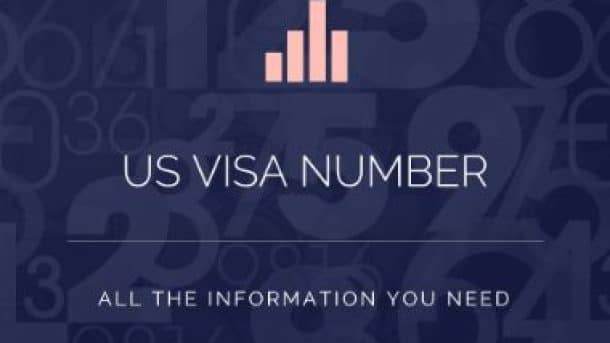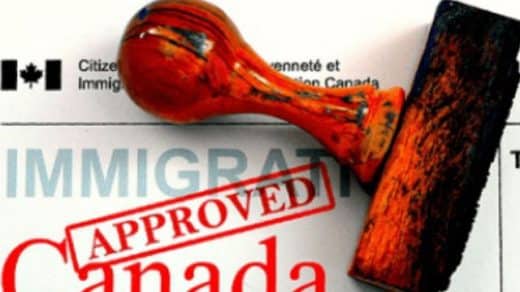The US Visa Number is a unique identification assigned to all immigrant and non-immigrant visas issued by the US government. This number is critical for identifying and tracking visa applications, and immigration officers use it to verify visa holders’ statuses. The US Visa Number is normally eight to 10 digits long and printed in red ink in the lower right corner of the visa paperwork.
Additionally, immigration officers utilize the US Visa Number to verify the status of visa holders and ensure that they are following the terms of their visa.
Overall, the US Visa Number is an important part of the US immigration system, and it is required for everyone seeking to travel or immigrate to the United States. Individuals may ensure that their immigration process runs smoothly and that they can take advantage of all of the opportunities that the United States has to offer by learning the role of the US Visa Number and where to find it on the visa document.
Understanding US visa numbers: definition and purpose.
A US visa number is a unique identification granted to every visa issued by the US government. The visa number consists of a letter followed by seven or eight numeric characters. The visa number is used to trace the visa and confirm that it is being used by the correct individual.
Location on Visa Documents
The US visa number is found on the visa document itself. It can be located in the lower right corner of the visa stamp. The location of the visa number can differ based on the type of visa issued.
Format and Composition
The structure and composition of the US visa number varies according to the type of visa issued.However, all visa numbers will begin with a letter and then seven or eight numeric characters. The letter identifies the type of visa issued, whilst the numeric characters identify each particular visa.
For example, an H-1B visa will have a visa number that begins with the letter “H” and is followed by seven numeric characters. In contrast, an immigrant visa will have a visa number that begins with three letters and ends with 10 numeric characters.
It is vital to note that the visa number does not correspond to the visa control number. The visa control number is a unique identification used by the US government to monitor the visa application process.
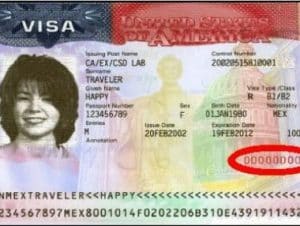
Finally, understanding the US visa number is critical for anyone considering a trip to or living in the United States. Individuals may ensure that their visa is utilized correctly and prevent any complications with US immigration authorities by understanding where to find the visa number on the visa document, as well as its type and content.
Types of US visas
Individuals who want to enter the United States can obtain one of three types of visas. US visas are divided into three categories: immigrant visas, nonimmigrant visas, and specialty visas.Immigrant visas
An immigrant visa allows people to enter the United States as permanent residents. This sort of visa is sometimes referred to as the Green Card. Immigrant visas are typically issued to people with close family ties or job possibilities in the United States. Some of the most prevalent forms of immigrant visas are:
- Family-Based Visas: These visas are issued to people who have close relatives who are US citizens or permanent residents.
- Employment-Based Visas: These visas are issued to people who have job offers or opportunities in the United States.
- Diversity Visas: These visas are awarded through a lottery system to people from countries with historically low immigration rates to the United States.
Non-immigrant Visas
A nonimmigrant visa allows someone to enter the United States temporarily. Nonimmigrant visas are typically issued to people who are visiting the United States for business, tourism, or education. Some of the most prevalent forms of nonimmigrant visas are:
- B-1/B-2 Visas: These visas are issued to those visiting the United States for business or tourism.
- F-1 Visas: These visas are issued to those studying at a US educational institution.
- H-1B Visas: These visas are issued to those who have particular talents or expertise and are traveling to the United States to work.
Specialty visas
Specialty visas are those that are provided for specific purposes. Some of the most prevalent forms of specialty visas are:
- K-1 Visas: These visas are issued to fiancés of US citizens who are traveling to the United States to marry.
- P Visas: These visas are issued to sports, artists, and entertainers traveling to the United States to perform.
- R Visas: These visas are issued to religious workers who are visiting the United States to work for a religious organization.
Overall, the type of visa required will be determined by the individual’s personal circumstances and the purpose of their journey to the United States.It is critical to carefully understand the requirements for each form of visa and apply for the correct visa type.
Visa Application Process
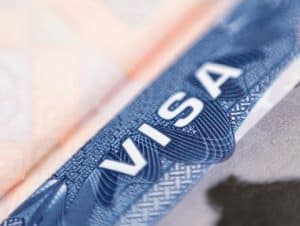
When applying for a US visa, various stages must be completed. This section describes the overall procedure of acquiring a US visa.
Application Forms
The first stage in the visa application process is to complete the required application form. The DS-160 form is used for nonimmigrant visas, and the DS-260 form is used for immigrant visas. These forms can be filled online and submitted electronically to the Department of State’s website. The applications request personal information, travel intentions, and other facts about the applicant.
Interview & Documentation
Once the application form has been submitted, the applicant must schedule an interview with the embassy or consulate where they intend to apply. During the interview, the consular official will analyze the application and supporting documents to determine whether the applicant is eligible for a visa. A passport, photos, and proof of financial assistance can all be used as supporting papers.
Visa issuance and fees
If the consular officer approves the visa application, the applicant must pay the visa issuance fee. The fee varies with the type of visa and the applicant’s country of origin. Once the cost is paid, the visa will be given, allowing the applicant to travel to the United States.It is crucial to remember that the visa issuing date does not coincide with the date of arrival into the United States. The visa permits the applicant to go to a US port of entry, where a US Customs and Border Protection official will determine whether the applicant is allowed to the country.
In summary, the US visa application procedure includes filling out the relevant application form, scheduling an interview, providing supporting documents, paying the visa issuance fee, and receiving the visa. It is critical to carefully follow the regulations and instructions issued by the embassy or consulate where the applicant intends to apply.
Visa Identification Details
When it comes to identifying a US visa, numerous pieces of information must be known. This section will go over the passport information and personal identity details that are generally included with a US visa.
Passport Information
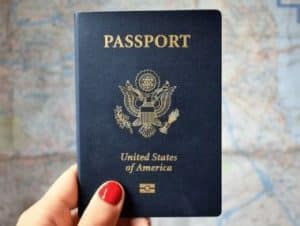
The passport number is one of the most crucial pieces of information on a US visa. Each passport is granted a unique identification, which is used to trace both the passport and the holder. It is usually found in the top right corner of the visa and is a mix of letters and digits.
Other passport details that may be included on a US visa include the first and last name, birthdate, nationality, gender, and date of birth. All of these facts are necessary for identifying the passport bearer and determining whether they are authorized to travel to the United States.
Personal Identification
In addition to passport information, a US visa will contain personal identification information for the visa bearer. This usually contains a unique identification number provided to each visa holder and used to track their visa status.
Other personal identity information that may be included on a US visa include the first and last name, birthdate, nationality, gender, and date of birth. These facts are critical for establishing that the visa holder is authorized to travel to the United States and that they are the person who obtained the visa.
Overall, understanding the passport information and personal identity details given on a US visa is critical for confirming that the visa holder is entitled to go to the United States and that their visa is valid and current.
Visa Usage and Limitations
When applying for a US visa, it is critical to understand its purpose and limitations. A US visa is a temporary document that allows its holder to enter the United States. The visa is issued for a specified purpose and has a set length of stay.
Entries and Duration of Stay
A US visa may be given for a single or several entries. A single-entry visa permits the holder to enter the United States once, but a multiple-entry visa allows them to enter several times.The number of entries permitted will be indicated on the visa.
The duration of stay refers to the amount of time the visa holder is permitted to stay in the United States. This will also be included in the visa. It is crucial to note that the duration of stay does not coincide with the visa validity period. The duration of stay refers to the maximum amount of time a visa holder can spend in the United States during each visit.
Visa Expiration and Renewal.
A US visa has an expiration date, which is the deadline for the visa holder to enter the United States. If the visa holder does not enter the United States before its expiration date, the visa is no longer valid.
It is crucial to know that a visa to the United States does not ensure entrance. The US Customs and Border Protection (CBP) officer at the port of entry makes the final decision on entrance. The CBP officer will evaluate a number of variables, including the purpose of the visit, the length of stay, and the visa holder’s ties to their home country.
If a visa holder needs to stay in the United States for more than the time period provided on their visa, they must petition for an extension of stay with US Citizenship and Immigration Services (USCIS). Alternatively, they can leave the US and seek for a new visa in their home country.
In short, a US visa is a temporary document that allows the holder to enter the United States for a defined purpose and length of stay. The visa can be issued for one or more entries and has an expiration date. CBP officers at the ports of entry make the final decision on entry into the United States.
Arrive in the United States.
When visiting the United States, foreign tourists must pass through Customs and Immigration at the US Port of Entry. Customs and Border Protection (CBP) officers will check the traveler’s travel documents and visa, if applicable.
Customs & Immigration
CBP officials will inquire about the traveler’s itinerary, including the purpose of the visit, duration of stay, and final destination. The officers may also inquire about the traveler’s occupation, family, and other personal details. Travelers should answer all inquiries honestly and completely.
Visa Assistance and Inquiries
Individuals who are seeking for a US visa or have issues regarding their visa number can get advice from US Citizenship and Immigration Services (USCIS). The USCIS offers a number of tools for people applying for a US visa, including information on required paperwork and commonly asked questions. Visitors can access these resources by going to the USCIS website.
In addition, the US Department of State offers a variety of services for people applying for a US visa. Visitors can find information about the DS-160 online nonimmigrant visa application, including frequently asked questions and how to correct an application.
Individuals applying for a US visa or who have queries regarding their visa number can access a range of services. By reading these materials, visitors can obtain a better grasp of the application process and verify that they have all required documents and information.

